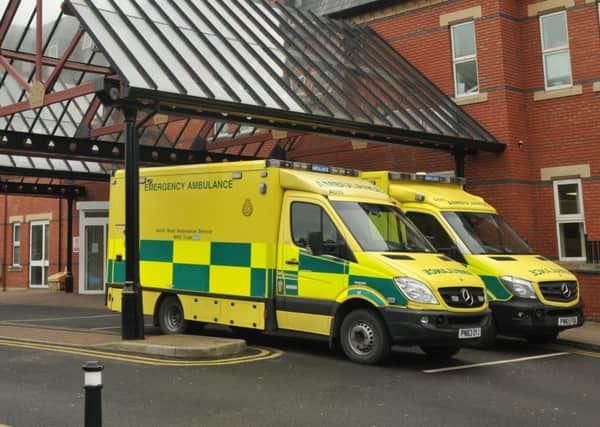A&E wait times are slashed


Provisional figures show 92.66 per cent of patients left the department before the four-hour target in April.
It was the best performance since June last year and follows efforts to take the figure past 90 per cent. But the hospital is still failing to reach the Government target of 95 per cent. This was last achieved in October 2015.
Advertisement
Hide AdAdvertisement
Hide AdThe data was revealed in the agenda ahead of today’s meeting of NHS Wigan Borough Clinical Commissioning Group’s governing body.
Confirmed figures for March show 87.91 per cent of patients were seen in four hours, with 936 of the 7,741 patients still being at A&E.
Greater Manchester Health And Social Care Partnership has challenged A&Es to return to 90 per cent, a figure achieved by only one trust in the area in March.
Wrightington, Wigan And Leigh NHS Trust, which runs the hospital, has taken several steps in a bid to do this. They included ring-fencing assessment areas, discussing every acute admission through A&E with a consultant, having the Access To Community Services Team work in A&E to prevent admissions and having an extra A&E consultant on duty in the evenings.
Advertisement
Hide AdAdvertisement
Hide AdAll elective surgery was cancelled in March to free up beds and staff, but have since resumed. There are plans to turn Christopher Home on the infirmary site into a primary care unit to ease A&E pressure further.
The report paints a mixed picture for ambulance service performance. Crews responded to 64.9 per cent of urgent “red one” calls in the borough in eight minutes and 59.5 per cent of “red two” calls. Both were below the previous month’s performances and the 75 per cent target.
They responded to 89.8 per cent of calls within 19 minutes, below the 95 per cent target but better than February’s 88.4. It took more than 30 minutes for staff to hand over patients in 20.58 per cent of cases and more than an hour in 6.25 per cent of cases.